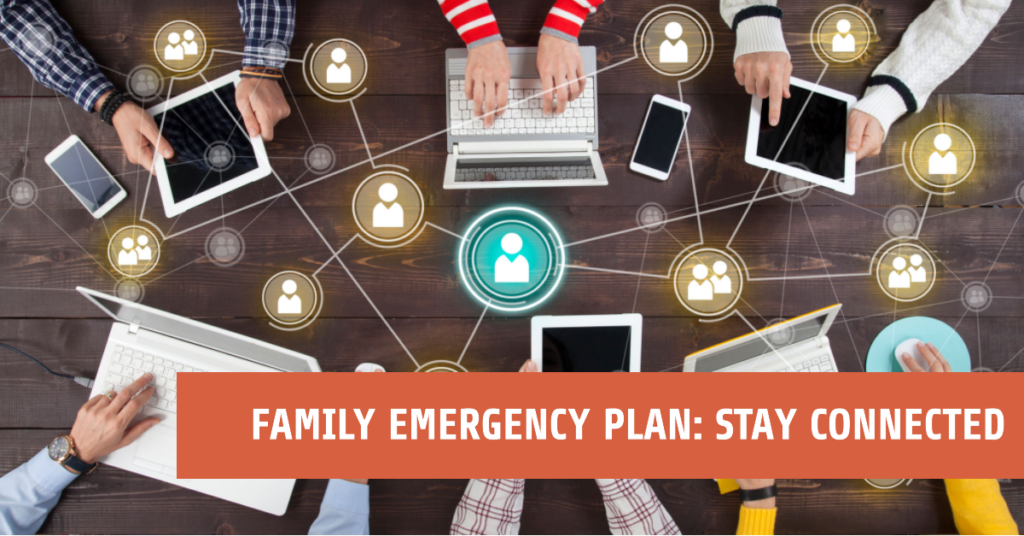
Emergencies can strike anytime, anywhere. Effective communication is critical during these times. A well-structured family emergency plan can make all the difference. In this guide, we’ll explore the steps to create an effective communication plan to keep your family connected and informed during a crisis.
Establishing Communication Methods
Selecting primary and backup communication methods ensures continuous contact among family members. Consider the following options:
Cell phones and text messaging
Text messages often work when calls don’t, as they require less bandwidth. Teach your family members how to send texts and make calls. Make sure everyone has each other’s contact information saved in their phones.
Satellite phones
These phones work independently of local networks, using satellites to establish connections. They’re particularly useful during widespread network outages caused by natural disasters or infrastructure damage. Though expensive, having one in your emergency kit can be a lifesaver.
Two-way radios
Radios offer reliable short-range communication and don’t rely on cellular networks or internet access. Walkie-talkies or ham radios are suitable options for families. Make sure all family members know how to use them, and keep extra batteries handy.
Emergency alert systems
Sign up for local emergency alerts to stay informed about threats in your area. These systems can send notifications via phone calls, text messages, or emails. Visit Ready.gov for more information on emergency alert systems.
Ensure all family members know how to use these communication methods and practice using them regularly.
Designating Meeting Points
Establishing clear meeting points is crucial for a family emergency plan. These designated locations will help reunite family members in case they become separated during an emergency. It’s essential to identify various types of meeting points, considering different scenarios and situations.
Meeting points within the home
Determine a safe spot within your home where everyone can gather during emergencies, such as the basement during tornadoes or a central room with no windows during earthquakes. Ensure this location is easily accessible, and all family members are aware of its importance.
Meeting points within the neighborhood
Choose a nearby location, like a neighbor’s house or a recognizable landmark, where your family can gather if it’s unsafe to remain at home or if you need to evacuate the immediate area. Make sure the location is within walking distance and familiar to all family members, including young children.
Meeting points outside the neighborhood
Identify a safe location outside your neighborhood, such as a relative’s house, a community center, or a designated evacuation site, where your family can reunite if you are forced to evacuate the area entirely. This location should be easily accessible by various transportation modes, including walking, driving, or public transportation.
Meeting points in different scenarios
Consider various emergency scenarios when selecting meeting points. Different emergencies may require different responses, so it’s crucial to have multiple options. For example, in the event of a flood, you may need a meeting point on higher ground, while a wildfire may require a location away from wooded areas.
Communication and information sharing
Ensure each family member has a clear understanding of all designated meeting points and the circumstances under which they should be used. Share a map or a list of addresses and phone numbers for each location. Regularly review and discuss these meeting points during family emergency planning sessions to reinforce their importance and address any concerns or changes.
By designating and familiarizing your family with multiple meeting points, you will be better prepared to reunite and ensure everyone’s safety during emergencies.
Preparing Emergency Contact Information
Keep a list of important contacts readily available. Include:
Family members
Store contact details for immediate and extended family members, including multiple phone numbers, email addresses, and social media profiles.
Neighbors
Include contact information for close neighbors who can assist during emergencies. Establish a neighborhood support network to share resources and information.
Schools and workplaces
List contact details for schools and workplaces to coordinate with them during emergencies. Ensure you’re familiar with their emergency protocols.
Local emergency services
Include contact information for local police, fire, and medical services, as well as emergency management agencies.
Store contact information both physically and digitally, and share it with family members. You can use a shared cloud-based document, a dedicated app, or a printed list in a waterproof container.
Regularly Updating and Practicing Your Plan
Schedule periodic reviews and updates for your plan to ensure it remains effective. Conduct practice drills to familiarize your family with the plan and adapt it as family needs change, such as when moving to a new location or when children start attending different schools. Make sure to review and update contact information, meeting points, communication methods, and go bag contents regularly.
During drills, assess how long it takes to gather at meeting points, how effective communication methods are, and identify areas for improvement. Involving your family in these activities will help everyone feel more confident and prepared during an actual emergency. Remember to also practice evacuating with your go bags to simulate real-life scenarios. This will help identify any challenges or discomforts that can be addressed before a real emergency occurs.
Additionally, stay informed about changes in local hazards and potential threats by connecting with local emergency management agencies and attending community preparedness events. This will help you adjust your family’s emergency plan as needed to address new risks.
By dedicating time to update and practice your family’s emergency plan, you are taking an essential step towards ensuring their safety and well-being during emergencies.
Incorporating Your Communication Plan into Your Go-Bag
Include copies of contact information and communication devices (with chargers) in your go-bag.
Communication devices and navigation tools
Include a battery-powered or hand-crank radio for receiving emergency broadcasts, and a charger or power bank for your phone. Consider packing a satellite phone, two-way radios, or other communication devices. Include a map of your area and a compass, as GPS devices may not always be reliable during emergencies.
Make sure go-bags are easily accessible during emergencies. For more information on go-bag essentials, visit Go Bag List.
Conclusion
A well-prepared family emergency communication plan is invaluable during a crisis. Taking the time to create, practice, and maintain your plan will ensure your family stays connected and informed when it matters most. Don’t forget to check out Go Bag List for more information on go-bag essentials.
